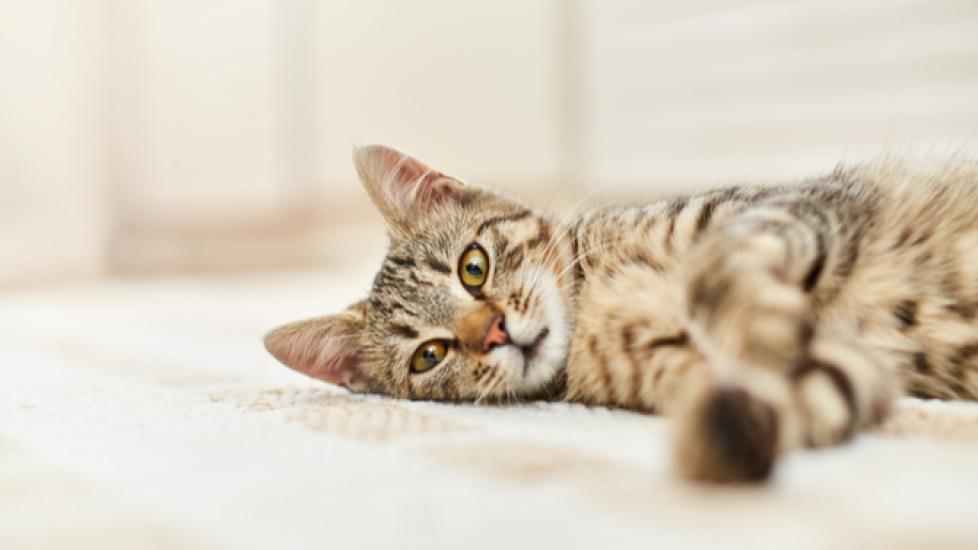Signs of Stroke in Cats
According to the US Centers for Disease Control and Prevention “someone in the United States has a stroke every 40 seconds,” and strokes are responsible for “1 out of every 20 deaths.” While strokes in cats are nowhere near that frequent, veterinarians are starting to realize that they do occur more often than we used to think, probably because more cats are now getting the diagnostic tests necessary to reach a diagnosis.
What is a Stroke?
The Dictionary of Veterinary Terms: Vet-speak Deciphered for the Non-Veterinarian defines stroke as “impairment of blood flow through blood vessels in the brain leading to destruction of brain tissue.” Two circumstances cause most strokes in cats:
1. A clot within a blood vessel in the brain. Blood clots can either form within the affected vessel (a thrombosis) or elsewhere in the body and then travel to and lodge in the vessel (an embolism). In either case, this type of stroke is referred to as an ischemic stroke.
2. Rupture of a blood vessel in the brain. This is called a hemorrhagic stroke. Bleeding from the ruptured vessel results in blood pressing on and damaging nearby brain tissue.
Whatever type of stroke a cat has, the symptoms that develop are determined by how much brain tissue is affected, how severely it is affected, and where in the brain it is located. Possible signs of a stroke in cats include:
- Altered mental status
- Circling
- Weakness
- Head pressing (possibly as a result of a headache)
- Not using the legs normally (sometimes on one side of the body)
- Unsteadiness when walking
- A head tilt
- Abnormal eye movements
- Unequal pupil sizes
- Muscle spasms, including severe spasms that cause the head, neck, and body to arch backwards
- Seizures
- Coma
- Death
What sometimes will set a stroke apart from other conditions that can cause similar clinical signs is the fact that with a stroke, affected cats develop symptoms very quickly. They can essentially seem perfectly normal one minute and then be in big trouble the next.
In most cases, a cat’s symptoms don’t get significantly worse after the first 24 hours or so, unless a ruptured blood vessel continues to bleed.
What Causes Strokes in Cats?
While we think of strokes occurring primarily in older people, a small study published in 2011 showed that the median age for affected cats was around 9 years.
Several underlying health problems seem to increase the risk that a cat might have a stroke. Some that are more commonly cited include cancer within or spreading to the brain, heart disease, high blood pressure, hyperthyroidism, kidney disease, conditions that make the blood clot more easily, liver disease, diabetes, migrating parasites, lung disease, infections, and trauma. However, in many cases no cause for the stroke can be identified.
How Are Strokes Diagnosed in Cats?
When a veterinarian examines a cat who may have had a stroke, he or she will start by taking a thorough health history and asking questions about what symptoms you have seen at home, how quickly they developed, and if they have changed over time. A physical and neurological exam comes next, followed by any lab work (blood tests, urinalysis, fecal exam, blood pressure testing, etc.) that is necessary to rule out other diseases that might be to blame for or that are playing a role in your cat’s condition.
At this point, the veterinarian may have a fairly strong feeling that your cat has had a stroke, but more advanced testing is necessary if you need a definitive answer. Brain imaging (MRI’s or CT scans) can identify abnormalities within the brain. Analysis of cerebrospinal fluid or a D-dimer blood test that looks for the breakdown of abnormal blood clots within the body can also be helpful.
How Are Cat Strokes Treated in Cats?
Treatments used to help cats after strokes are primarily symptomatic and supportive. For example,
- Oxygen therapy to improve oxygen delivery to damaged brain tissue and promote healing
- Seizure medications for cats to control seizures or reduce pressure within the skull, if necessary
- Management of any underlying conditions
- Maintaining hydration and adequate nutrition
- Help with urination, defecation, cleanliness, and comfort
- Physical therapy to address any persistent neurologic deficits
Determining whether to initiate or continue treatment after a cat has had a stroke can be difficult, but it is important to remember that recovery is possible and cats tend to look their worst in the first 24 hours after the stroke has occurred. It is generally thought that cats who have less severe symptoms and are otherwise relatively healthy are the best candidates for making a meaningful recovery. Unfortunately, research into what a cat’s prognosis really is after having a stroke simply hasn’t been done.
